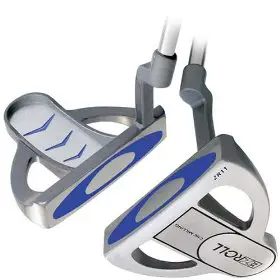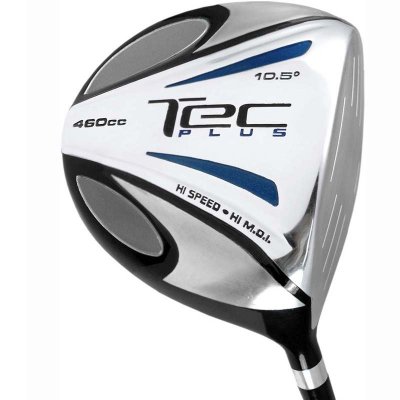Best Loft For Driver Beginner

Dec 07, 2013 So What IS The Best Beginner s Driver Choice. We have discussed a high loft, head size and type of shaft. The one thing we have.
Correct Loft for a Golf Driver Driver loft helps determine this angle, Best Golf Clubs for Women 7 Show More; More in Golf Clubs.
Best Golf Drivers for Beginners. Accomplished golfers can hit drives with a diminished loft, but a beginner should choose a driver with far more loft because it.

The Best Golf Drivers for Beginners. The number one wood, or the driver, has the flattest face least loft of any club short of the putter.
The Best Drivers for Beginners when choosing the best golf driver, harmful to a beginner. Stating a driver should have perimeter weighting.
- Finding the Best Driver for a Beginner. The Importance of Driver Loft and Shaft Flex. For a beginner golfer, the ideal loft on a golf driver should be 10.5.
- One of the most misunderstood aspects of picking out a driver is choosing the loft. How to Determine Which Loft You Should Get on Your Best Golf Clubs for.
What are the Best Golf Clubs for Beginners and High Handicappers. In addition to the loft aspect of shots, Best Beginner Driver.

If you haven t yet taken a look at my best golf clubs for a beginner article, make sure you do, as I touch on all the clubs in the your bag, not just your driver.
Often when people come to me asking what the best beginner golf driver is, I tell them about the two main elements, the driver loft, and the shaft flex. These are the two areas in which you need to look at before purchasing your driver.
The Importance of Driver Loft and Shaft Flex
For a beginner golfer, the ideal loft on a golf driver should be 10.5 degrees minimum. In fact, for a beginner I d go as far as an 11, 12, or maybe even 13 degree loft driver.
The reason I recommend a higher degree of loft is because a club with a higher loft is generally more forgiving and therefore much easier to hit consistently. Just look at a 9 iron or a wedge, they re the easiest clubs in your bag to hit. Compare that to how difficult the long irons such as 3, 4, or 5 are to hit. The higher loft encourages the ball flight to go upwards rather than outwards, helping with the slices or hooks I often see in a beginner s game.
The shaft flex is another common problem I see when it comes to the best beginner golf driver. The stiffness of the shaft affects the swing a great deal. It s important that the shaft on the driver is soft enough so you can learn how to swing it correctly and release. Also, if you re a beginner whose swing speed isn t quite as high as a 20 something then I recommend going with a regular to light flex shaft. If you re in your twilight years then maybe even a senior flex shaft will be better.
Remember loft and a soft shaft are the two most important elements to have in your driver. It will help with consistency and accuracy, two of the main aspects of golf beginners continue to forget. Distance should be a distant thought, never to be engaged until you get the consistency and the accuracy into your driving.
Beginner Golf Drivers I Recommend
For male beginners:
TEC Plus 460 cc Ti Matrix Driver Men s
The TEC Plus Men s Ti Matrix 460cc Driver features a deep face and maximum C.O.R. coefficient of restitution design. C.O.R. is a measure of how efficiently energy, in the form of velocity, is transferred between the ball and the club head. Essentially, a maximum C.O.R. means that the club head has the largest, USGA-legal spring-like effect.
The titanium matrix construction is perfect for long shots off the tee. The graphite shaft is strong and stable, and the grip means the club will stay securely in your hand. This right-handed club delivers great distance and a low trajectory, and is great choice for any amateur looking for an affordable driver.
For beginner ladies:
TEC Plus 460 cc Ladies Offset Driver
UK Visitor.
Unfortunately the TEC Plus driver can t be shipped to the UK, but that doesn t matter because you can get your hands on the GolfGear M-Series 460cc 12 Hot Forged Driver, which has the option of the 12 degree loft too.
Beginner s Guide to Golf Clubs. but these irons are hard to hit for a beginner. Most beginning golfers should use a driver with either a 10.5 degree loft or.

Your driver is probably going to be the most technologically advancedâ and expensiveâ club in your bag. New models arriving in pro shops feature moveable weight systems, exotic materials and designs that look nothing like what Old Tom Morris would have swung.
So before you plunk down your hard-earned greenbacks, you d better arm yourself with some information. Here are five things you ll want to know before you make your next driver purchase.
1. How do I maximize distance.
Okay, okay. You want to hit the ball farther. Or to be more accurate, you want to humble your buddies and quietly walk down the fairway with a smirk on your face, then nod as if to say, You fellas are away.
Here s the deal: Back in the day, it was thought that the best drives started low, then shot high in the air. We now know that those kinds of shots have too much backspin. In order to get the ball really deep down the fairway, we now know that you need to maximize carry distance. You want get the ball started on a high launch angle, and once it is in the air, you want it to hang up there due to just the right amount of backspin. Too much backspin and the shot will balloon up, then fall straight down. Too little spin and you can t keep the ball in the air long enough.
To make that happen, to create those perfect launch conditions, you need to have the ideal combination of clubhead, shaft and ball for your swing.
2. So how much loft do I need.
Do your drives feel rock solid when you hit them, but fall like a stone and drop short. That s a sure sign that you are not generating enough backspin with your driver. It s also likely that you are one of those players who hits your 3-wood better off the tee than your driver. Don t worry, you re not alone. More than a few players get more carry distance and better control with their 3-wood off the tee. Sure, the shorter shaft of your 3-wood will give you more control, but it s the loft, which is about 15, that really is the key.
If your driver has 9.5 or 10.5 of loft, and your typical swing is about 85 mph, which is about average for male players, then you may not generate enough backspin to keep the ball in the air long enough to maximize carry distance. Generally speaking, the slower your swing, the more loft you need on your driver. The faster your swing, the less loft your driver needs to create the ideal amount of backspin. FYI The more backspin you impart on the ball, the straighter your shot will probably fly. For this reason, you never hear about someone slicing a 9-iron or wedge.
Getty ImagesScott Hend lead the PGA Tour in driving distance in 2005
It s pretty safe to say that any player with a swing speed slower than 75 mph should be playing with a driver that has at least 12 of loft. But unfortunately, you can t make a nice, clean assumption about how much loft you need if you swing much faster than that because there are so many variables in the golf swing. One 90 mph players may be 10.5, but another 90 swinger might only need 9.5.
So what about those pros you hear about who have a driver with something like 8 of loft. Well, those guys probably swing their driver around 115 mph. If they played a 10.5 driver, their shots would have too much backspin and rob them of distance.
3. What is Flexpoint and is it important.
Flexpoint simply refers to the area of the shaft where it bends kickpoint, which you might also hear, means the same thing.
Generally speaking, a lower flexpoint will produce a higher ball flight, which can be good for slower-swinging players. The shaft literally flexes closer to the head of your driver and kicks it through the impact area so the ball goes higher into the air.
A high flexpoint, again, generally speaking, won t kick the ball up as much and produces a lower ball flight. This would be ideal for someone who swings his driver very fast, and therefore creates a lot of natural backspin.
But don t get the impression that we re talking about spots that are spread far apart. They re not. The standard length of a driver shaft is 45 inches and in reality, the flex point range is only about an inch or two wide.
So, are you putting one and one and one together to get three.
Getty Images
If you haven t, here s the kicker no pun intended : If you select the perfect clubhead and ball to use, but if your shaft doesn t compliment them, it will be very tough to consistently hit drives that are as long and straight as they could be. And if you change any one of those variables, you will change the flight of your drives.
4. Can a driver cure my slice.
Slicing is the bane of the amateur ranks. And golf club manufacturers know this. A slice is produced when you hit a shot with a clubface that is open to your swing path. This imparts left-to-right spin on the ball for a right-handed player and makes the shot curve right.
There are two kinds of drivers that are designed to help slicers: Draw-biased Designs:
Drivers with draw bias have weight in the heel area. That weight will make the clubface naturally close more easily on your downswing, so you will be less likely to slice. Several of the new 460cc monster-size drivers have this feature. Closed-face Designs:
Some drivers look like the face of the club points left when you set them behind the ball. That s because they do. Clubs with hook-faces are designed to impart right-to-left spin. Again, this will help you avoid the conditions that create a slice.
5. Is bigger always better.
460cc drivers are appealing because they offer an enormous effective hitting area. But not all of them are the same.
Think about it this way: Mercedes and Yugo both make sedans, but those cars are nothing alike. Don t assume that every 460cc driver will maximize power and offer lots of forgiveness on off-center hits. Weights and designs differ, and therefore, so does performance. That s why you need to get out there and demo several drivers before you purchase one.